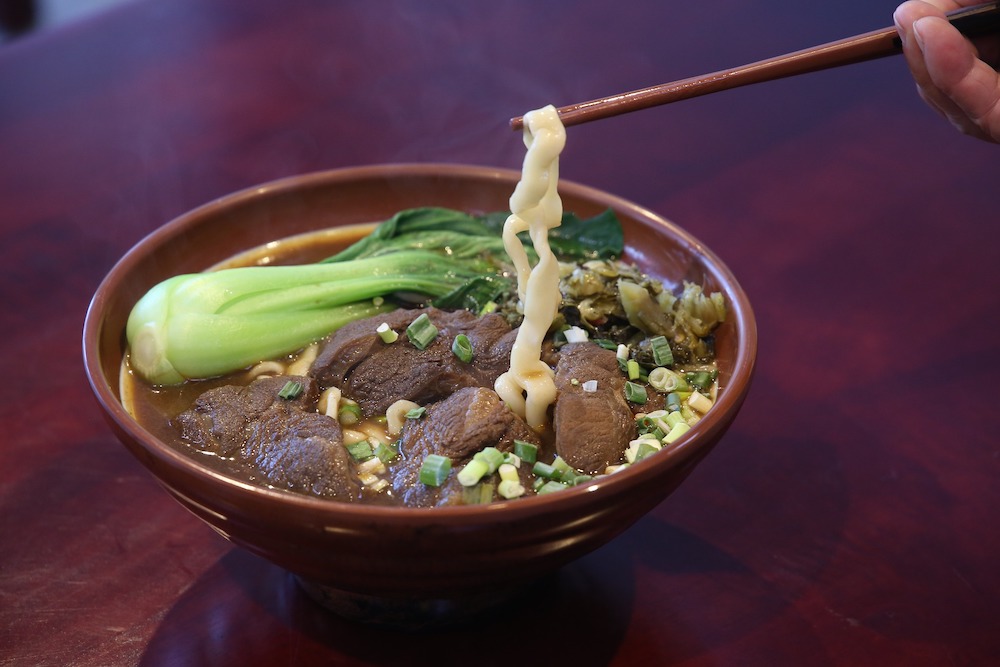This is part of our Quarantine Cooking Recipe Series.
After exhausting our home cooking ideas, we reached out to Shiyin Wang from Kaixin Cooking for new ideas. He kindly sent us this recipe for a soul-warming bowl of braised beef noodle soup. The method turns even cheaper cuts of beef into tender bites by slow-cooking (and goodness knows we all have plenty of time to fill these days). Give it three hours minimum for the beef to braise while fully submerged in the flavorful stock. That means making sure you start with plenty of water from the get-go because adding water later will toughen the meat.
Winter Braised Beef Noodle Soup

Image via Pixabay
Serves 4
Ingredients:
500g of beef brisket or flank – choose pieces with a mix of fat and lean
300g of noodles (ideally fresh)
1 large (1kg) daikon radish
1 large bunch (50g) scallions or spring onions
1 star anise
1 cinnamon stick
1 tsp cumin seeds
1 tsp Sichuan red peppercorns
1 dried chili
1 bay leaf
2cm piece of ginger
2 tbsp Chinese vinegar
4 tbsp dark soy sauce
8 tbsp light soy sauce
2 cups yellow wine
1 tsp brown sugar
Method:
Cut the beef into cubes and thinly slice the ginger.
Place beef cubes in a pan, fat side down, and cook on medium heat until fat renders into the oil. Turn the heat to low and cook each side of the beef until all sides are browned.
Transfer only the meat to a stockpot. Pour out some of the remaining fat, leaving a layer at the bottom of the pan.
Cook the anise, cinnamon, cumin, peppercorns, chili, bay leaf and sliced ginger in the pan with remaining beef fat, over low heat. Stir to release aromatics, then add the spices to the stockpot.
Add the vinegar, soy sauces and wine to the stockpot. Optionally, add the sugar. Finally, add water to the pan until the water level is twice the level of the meat, ensuring it will stay submerged throughout the cooking time.
Bring the pot to boiling, then reduce the temperature to a gentle simmer. Taste the broth at this point – it should be just saltier than a soup. If it is lacking seasoning, add slightly more vinegar, dark soy and light soy in a 1:2:4 ratio.
Simmer the mix for two hours. During this time, peel the daikon radish and cut into quartered slices and after the two hours add the radishes to the pot. Tie the entire bunch of scallions into a knot to keep them together, and add to the pot.
Simmer the whole mixture for another one to two hours, according to your preference for meat tenderness.
Cook the noodles in water, separate from the soup, until al dente. Do not cook the noodles in the soup – their starch will go into the soup, turning it into a strange gravy.
Scoop up the beef, scallions, radishes and broth when serving into bowls, leaving the solid spices behind.
When the noodles are done, take them out of the water and add directly to the soup to serve. Garnish with cilantro leaves, sesame seeds and/or crushed peanuts.
READ MORE: Kaixin Cooking's Shiyin Wang on Farm-To-Table Eating
Scan the QR code below for more recipes and information about Kaixin Cooking.

This is part of our Quarantine Cooking recipe series – click here for more recipes.
[Cover image via Pixabay]




















0 User Comments